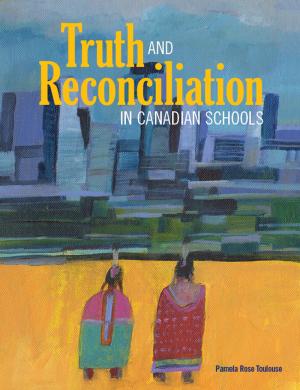
Truth and Reconciliation in Canadian Schools
Truth and Reconciliation in Canadian Schools is a comprehensive resource for K-grade 12 teachers. It offers teachers Indigenous perspectives and curriculum materials from an authentic perspective. These come in the form of background and historic information and lesson plans that can be easily brought into the classroom. The book is well-organized, written in an accessible language and connected to the curriculum.
This book is important because it can be used to respond to and implement the calls to actions related to teaching and learning that the Truth and Reconciliation Commission of Canada (TRC) Final Report put forward in 2015. Teachers can engage in this work in a relevant and age-appropriate way. In doing so, we can work towards creating understanding and critical classroom communities.
Truth and Reconciliation in Canadian Schools is divided into two parts. Part 1 is titled Program Foundation and builds knowledge of the legacy of residential schools, Indigenous peoples of Canada and their contributions, treaties and the sacred circle teachings. Included in Part 1 are current facts, photographs, timelines, statistics, maps, teaching strategies and curriculum connections. Part 2 is titled Truth and Reconciliation Lesson Plans by Grades. The lesson plans are connected to various strands of the curriculum. Each is written holistically, connecting to spiritual, physical, emotional and intellectual aspects of learning.
The following key points are particularly insightful for teachers. First, ‘contributions of Indigenous people’ section is very important because we are able to teach our students about the different areas Indigenous people have impacted and continue to impact. This challenges the stereotype that positions Indigenous people’s contributions only in the past. Second, the ‘considerations’ section of the lesson plans encourages teachers to be aware of the content we share with students. The following are tips for teachers: “do not use past tense when discussing the teachings of Indigenous people about stewardship of the Earth” (pg.76) and “do not assume that all Métis peoples have the same histories, teachings and values” (pg. 86).
Truth and Reconciliation in Canadian Schools is a must-read for all teachers.
Rabia Khokhar is a member of the Elementary Teachers of Toronto.